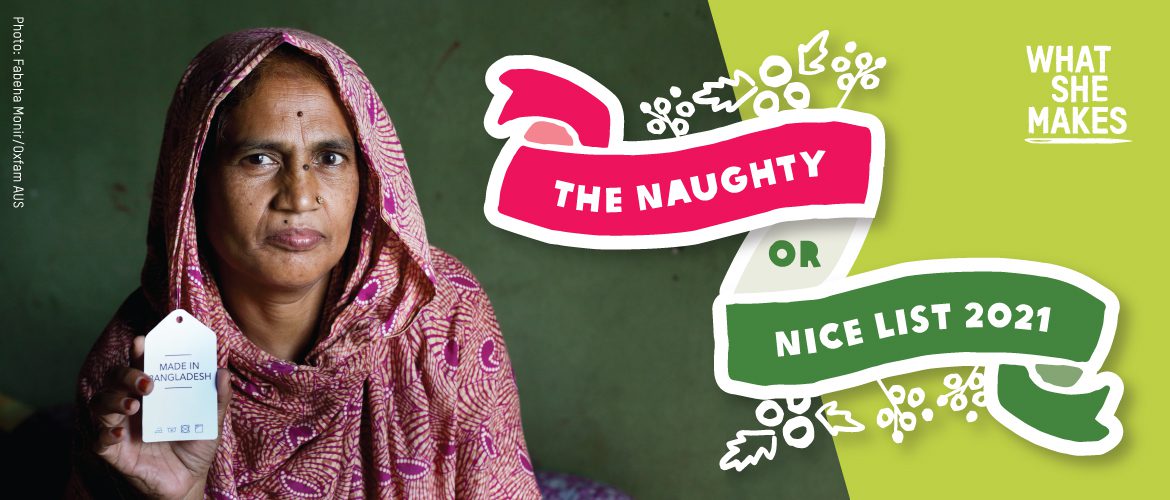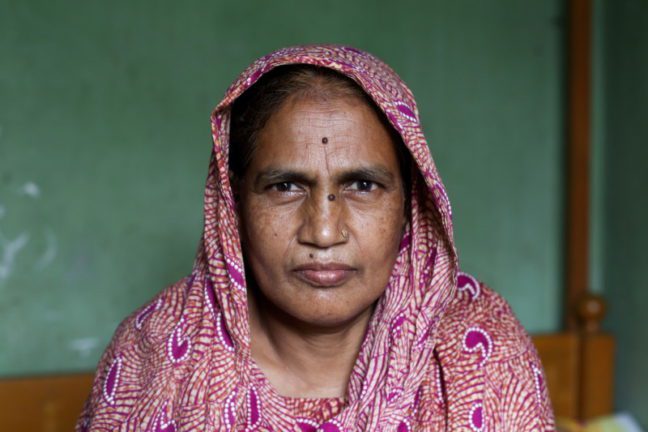
Major fashion brands in Australia, such as Just Jeans, Lorna Jane, Myer and Peter Alexander, must be open about how and where they manufacture their clothes to help the women who make them lift themselves out of poverty.
As Australians start their Christmas shopping, and with Black Friday this week we have released an updated Naughty Or Nice list which congratulates brands that have made commitments around living wages and calls out those that can do better.
The pandemic has seen the fashion industry in Australia so it is particularly unfortunate to see some brands fail to make commitments in this time of prosperity for the industry.
A living wage means enough money is earned to cover basic essentials for a family including food, housing, healthcare, clothing, transport, education and some money for unexpected events.
Three major clothing companies in Australia – Lorna Jane, Myer and The Just Group – have failed to take the basic step of publishing key information about where they manufacture their clothes.

It’s particularly disappointing to see a brand like Lorna Jane that promotes the wellbeing of women failing to be transparent about the factories in which their clothes are made.
While those three companies have found themselves on the Naughty list, others have taken positive steps towards backing up their commitment to a living wage. Those on the Nice list this year are Best & Less, Big W, Bonds, City Chic, Cotton On, Country Road, Dangerfield, David Jones, Forever New, Gorman, H&M, Kmart, Mosaic brands (including Rivers and Katies), and Target.
Our most recent report, Shopping for a Bargain, revealed that poor business practices – including aggressive price negotiation, inaccurate forecasting of orders, short lead times and last-minute changes to order – are having a profound impact on the lives of workers.
This is why we ask brands to commit to separating out labour costs to ensure there is clarity between factories and brands about the expectations of payment to workers. It’s been great to see this practice gaining traction in the industry.
Meanwhile, other brands – such as Jeans West and Zara – have made some progress, but still have work to do to catch up to the Nice brands on their living wage journey.
What is at the heart of this issue is the garment workers – mainly women in low-income countries – who make our clothes. These women aren’t paid enough to build a better future for themselves and their families, because their low wages keep them in poverty.

Women like Rita (pictured) she is a helper in a factory near Dhaka. Even when working seven days per week, Rita constantly grapples with how she can afford the basics.
Rita has worked in the garment sector for 14 years, forced to raise her three children as a single parent after her husband left the family and remarried. There were times when she was barely able to feed her family and could only buy leftover cooked rice for food.
Her two daughters are now married, living with their husbands and children. A desperate lack of food for herself and her son for an entire month prompted her reluctant decision to send him to his father and step-mother to live when he was aged 13. She still sends about a third of her monthly wage to the living and education expenses of her son, who she only gets to see on national holidays.
Rita also suffers from many health issues, but taking time off work is not an option. She tells of a time in 2009 when she was sick and malnourished and told to take time off to recover. When she returned to work, she discovered she had been dismissed and had to re-apply for her job—stripping her of years towards her long service leave. Big clothing brands must pay women like Rita a living wage.
You can find out more about the Naughty or Nice list here.